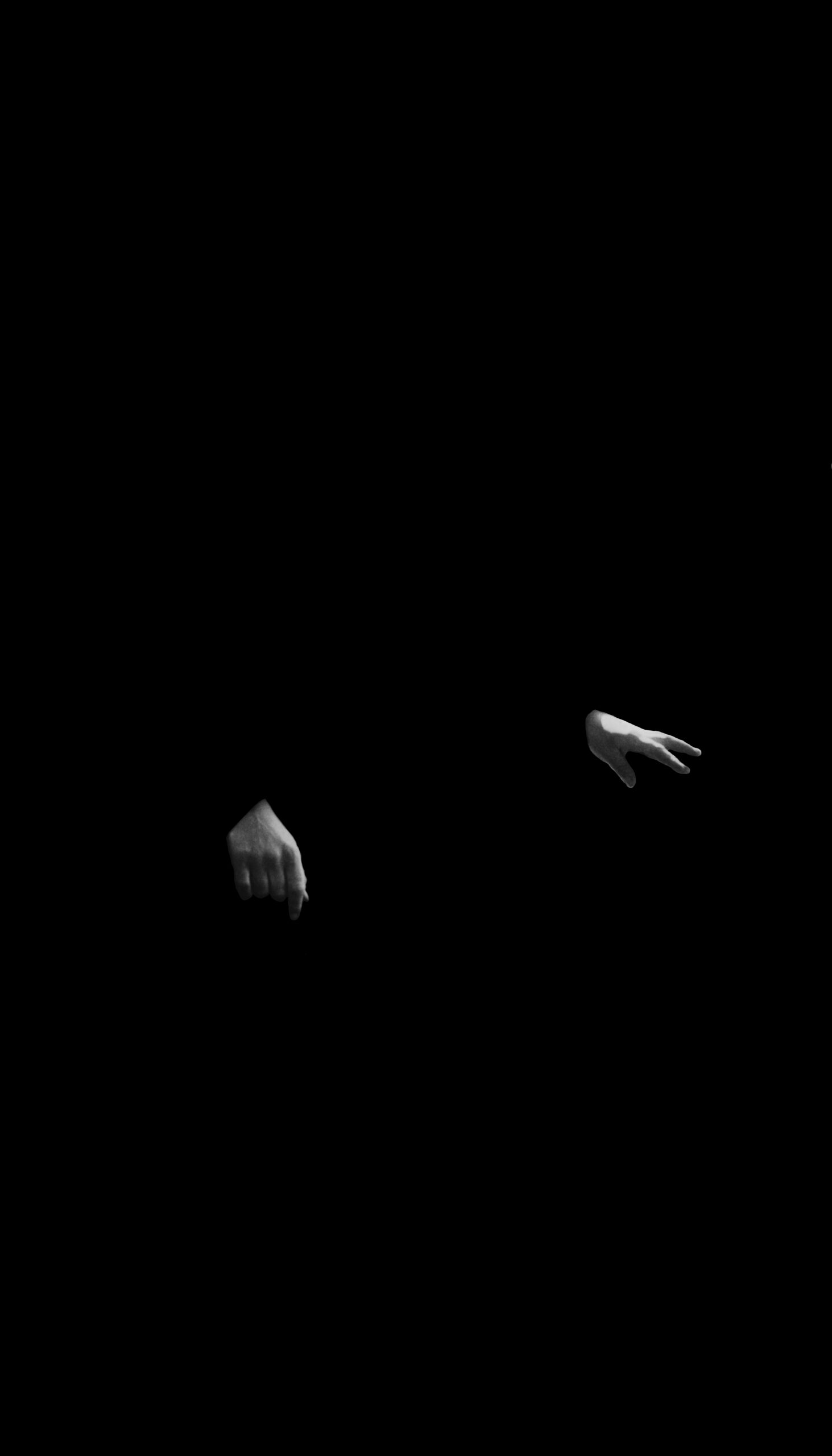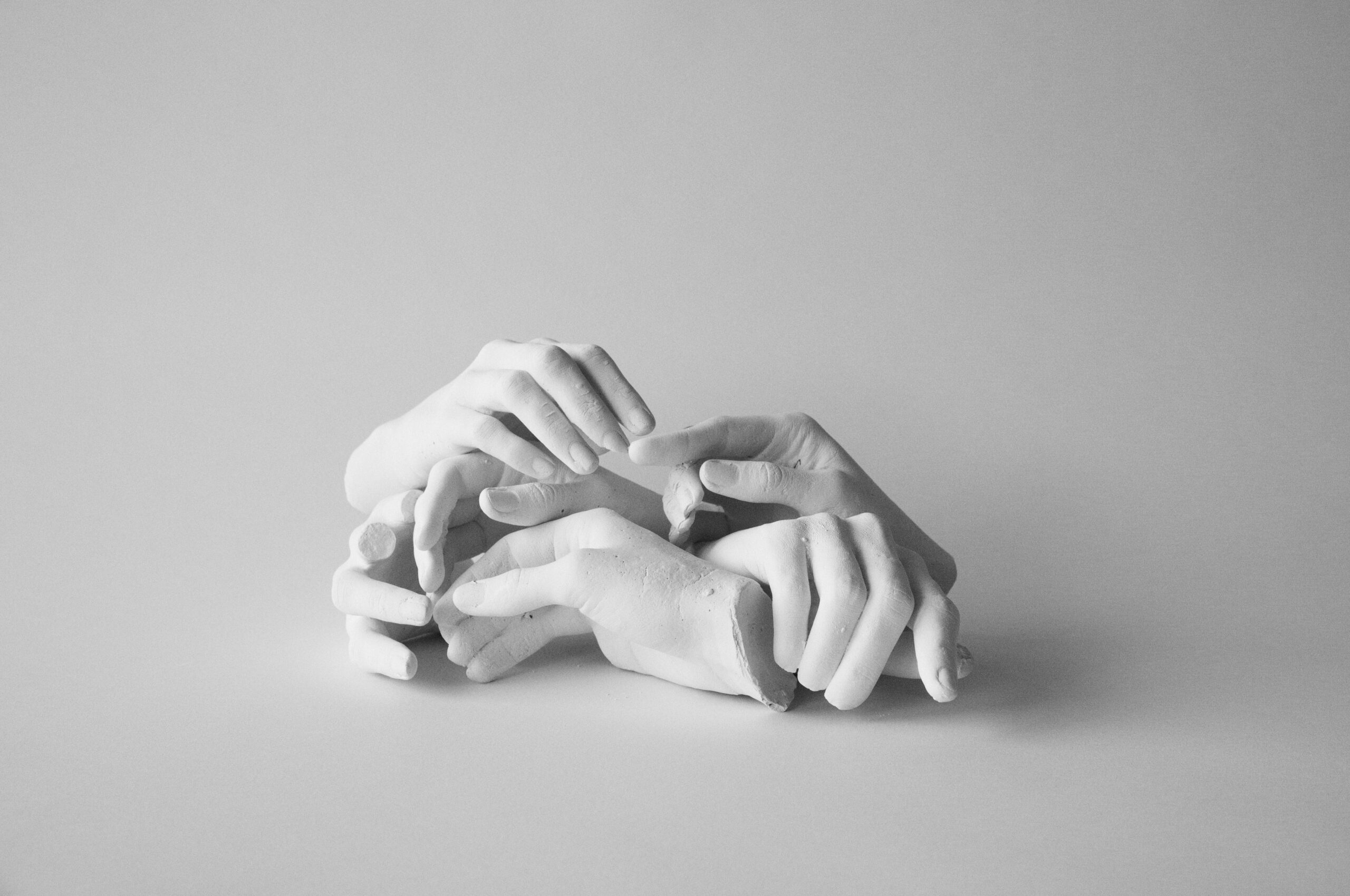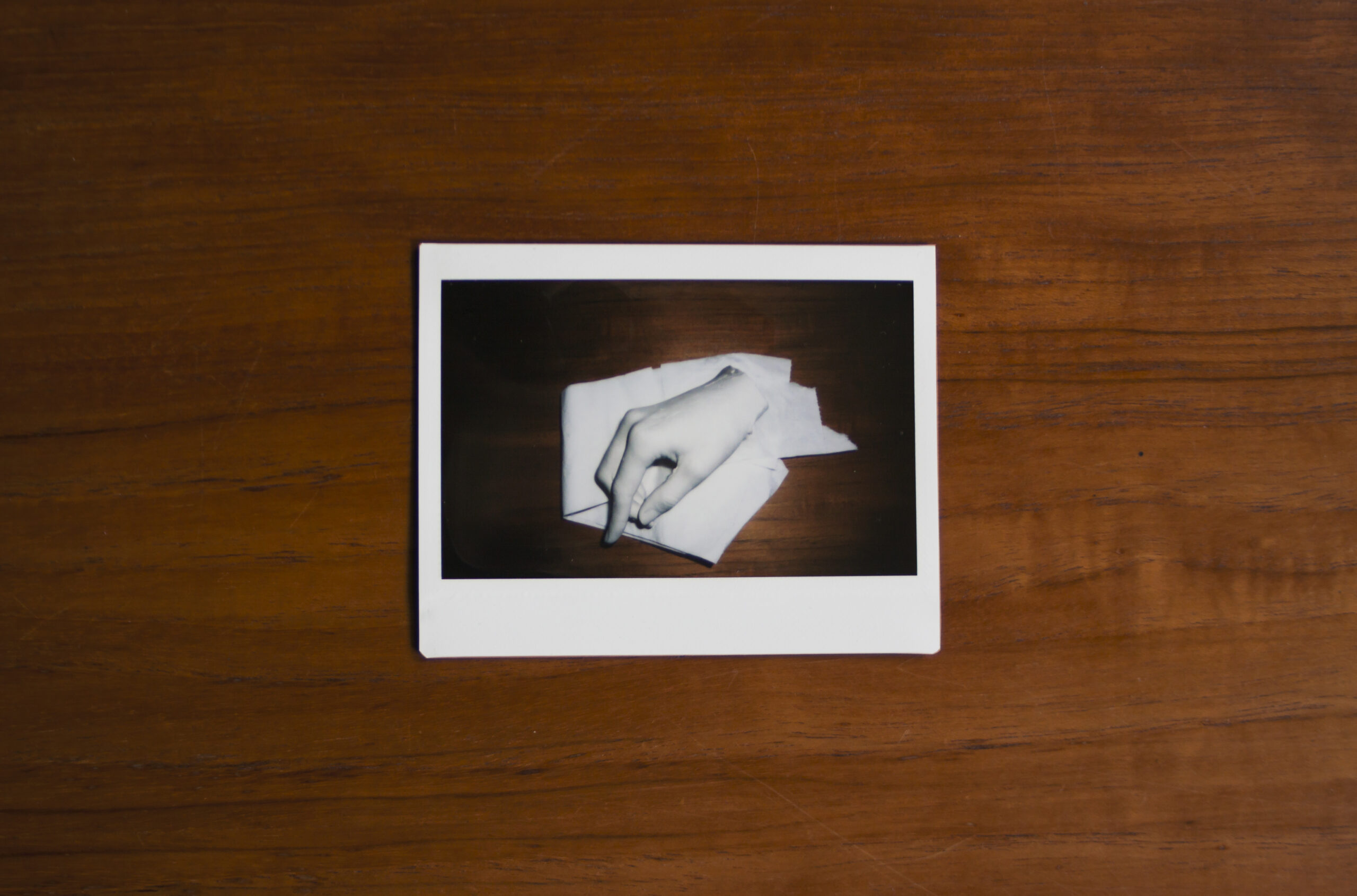


How to continue an ended relationship

A couple of years before my grandmother passed away, she moved into a one-room apartment in an elderly care home. The room was small and contained a modest kitchenette, her bed, some chairs, a TV, and a small table. Her eyesight had become really bad over the past years, and her memory was fading. Her fading was an ongoing loss of her as a person, like colour that fades in sunlight. It was a slow process but after a while, it was both visible and substantial. Because of this, I felt an urgent need to preserve her or the essence of her. She was still here, but she had started to change. I used to bike to her home and photograph her and her things, and record our conversations as an attempt to do just this. The conversations were rarely about something particular, but recurring during each conversation was her asking me: Tell me something fun! I would usually tell her about the food I had recently eaten as she loved food, especially Pommes Frites and saltimbocca. Two dishes that for some reason had stuck in her mind.
After she passed away I was left with these attempts of preservation. These were my recorded conversations and photographs but also some of her belongings such as letters, and a stack with rather anonymous photographs and albums. It became painfully apparent that these were not enough. My attempts to preserve her and our relationship had failed. Listening to the conversations and looking at the pictures afterward I felt that it rather was a documentation of a now-ended relationship. I could hear her voice in the recordings, and I could see different versions of her in my new and her old photographs, but I could not always see her before me as I experienced her when she was alive. In the photographs, I could see her in different states in her life. The child, the teenager, and the adult that I did not know, but also the middle-aged and old version that I did know. Our relationship naturally changed over time as I grew and she became older, but when she started to lose her eyesight and memory the relationship took new forms. I was aware that she did not really know what I looked like and had not known that for years. The touch especially began to play a more significant role in our communication as she often recognised me when I was really close or touching her. Holding and sometimes pressing the hands while talking was a way to communicate and connect. When looking through hers and my photographs, I rested my eyes on the hands depicted, and I could evoke a clear recollection of how her hands felt. Dry, soft, crooked, and frail.
The purpose of an image is described by art critic John Berger as: “…originally to conjure visions of something that was absent”. (1) In my and my grandmother’s photographs, I can physically see the absent thing, and it reminds me of my loss, but it also reconnects me through evoking the feeling of her hands. The picture of my grandmother’s hand as a child, teen, and adult is all the same hand that I have also touched and held. It is the same hand that has touched the other persons depicted and that has held the pictures that I am now looking at and holding. The hands might be a way to grasp our relationship, how it was and how it felt. Maybe encapsulate it even. It could be a way to reconnect with my grandmother now that she is gone, even if the relationship remains one sided and somewhat impossible.
Making an imperfect cast

I am looking at the image from my grandmother’s archive that lies in front of me and trying to position my hands as the hands depicted. The fingers on my right hand slightly together and bent. The thumb on its own. Relaxed. It is only three fingers that are visible on the picture of the left hand. I imagine my hand resting on some sort of support. How would my other two fingers be bent if my first three fingers are positioned this way? My left hand is more stretched out. My fingers do not touch each other. It is relaxed, but kind of awkwardly positioned. I try to fix my hands and then put them in the moulding mixture. Hold them completely still in this position as the mould stiffen. Then, I wait.
I open up the mould too fast, and the fingers come off.
I position my hands again and again as her hands. I make another cast off my left and right hand, repeating her movements. I am once again freezing her gesture, my hand, and the moment. I go over the same process over and over again. Observing, positioning, solidifying, casting, and taking out the cast.
The casts are not perfect, rather the contrary. They are broken, not always positioned right, have holes and marks on them. But I do not strive for the perfect cast.
Repetition is an act of love
”The love of repetition is in truth the only happy love”, wrote Søren Kierkegaard in the essay Repetition: An essay in experimental psychology. In this essay, Kierkegaard’s pseudonymous character Constantin Constantius, claims that life itself is a repetition. Repetition is security, and thus the only happy love as repetition does not contain any hope, anxiety, or sorrow. In this repetitive spirit, Constantius approaches a past love affair as a way to relive this relationship, return to the moment, and reconnect with his former lover. Among other things, he is trying to re-enact the conditions of the love affair by going to the same theatre to see the same performance, and sitting in the same seat. (2) Although what he discovers is that the only possible repetition is the repetition of impossibility. In the attempts to revisit the past the impossibility of such a return becomes apparent, but it could also mark the potential in what actually remains.

To repeat could be said to simultaneously fix and transform something. By revisiting the theatre Constantius is fixing the imagination of the relationship at the same time as he is actually transforming it. The process when I am repeating the movements and moments by freezing the hands works similarly. The original relationship is both fixed and reshaped with every repetition. It could thus be argued that every step of this process, every cast, takes me further away from the original experience. Even so, every repetition is a way to revisit a moment and recall a loved one. Through repetition, I, as Constantius, try to reconnect with my past. The reason why I keep repeating is that I don’t want the relationship to be over, even if it is transformed. This repetition is an act based out of love.
This repetitive behaviour could be described as both compulsive and nostalgic. Compulsive as you return over and over again to the same moment or objects, and nostalgic as the driving force is longing, an urge to return, and relive something past. Nostalgia is, as cultural critic Karin Johannisson says, about revisiting one’s immediate past. (3) It is thus dependent on some sort of distance and unattainability, as you won’t long for something that you already have. Photographs could be argued to be inherently nostalgic because they are based on a distance both in time and space. Therefore they can both trigger nostalgia and keep it alive. Through my own and my grandmother’s photographs, I can revisit my immediate past and they help me recall the feeling of when I touched her hands. Although, the pictures themselves are frozen in time and impossible to revisit. This very impossibility of actually re-experiencing the same thing twice could thus be one of the reasons to repeat the same movements and return to the same place or image over and over again. While the photographs and some aspects of my relationship remain the same, by repetition and reenactment they are reshaped. In that way some things remain the same, but they also always remain different.
Images
- Björk, Mathilda. Image from the project Untitled Hands [Fotografi]. 2016.
- Björk, Mathilda. Image from the project Untitled Hands [Fotografi]. 2022.
- Björk, Mathilda. Image from the project Untitled Hands [Fotografi]. 2016.
References
- Berger, John. Sätt att se på konst. Stockholm; Lindskog Förlag, 2018
- Kierkegaard, Søren. Repetition: An essay in experimental psychology. New York: Harper, 1964
- Johannisson, Karin, Nostalgia; en känslas historia [Elektronisk resurs]. Albert Bonniers förlag, 2014